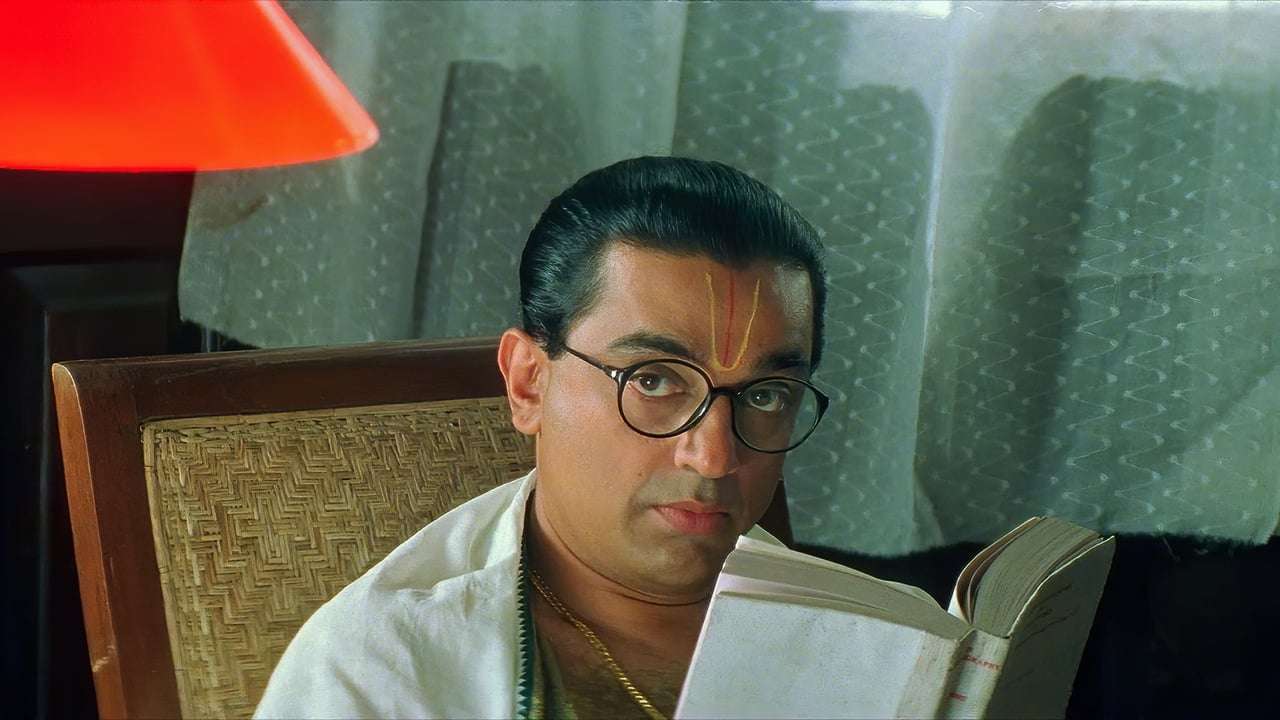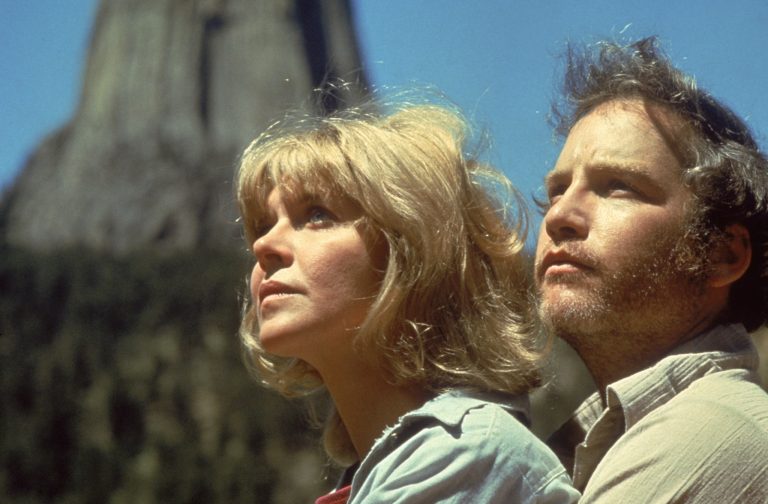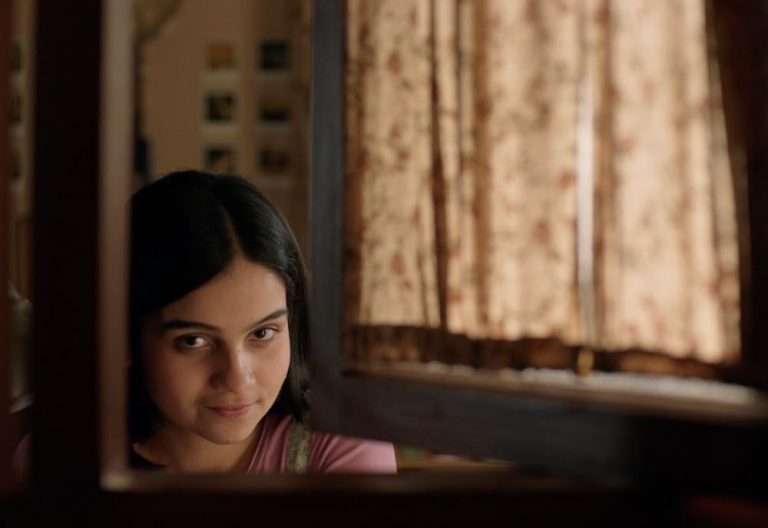Hey Ram (2000): Released in the year 2000, Kamal Haasan’s Hey Ram discusses issues of religious intolerance that have plagued the Indian subcontinent for centuries. The film boasts a star-studded cast of Kamal Haasan, Shah Rukh Khan, Rani Mukherji, Naseeruddin Shah, Hema Malini, Om Puri, and Girish Karnad, with other great acting performances from actors like Vasundhara Das, Saurabh Shukla, and Atul Kulkarni.
The film reflects the idea that humans fail to learn from history and repeat it using two parallel timelines. One timeline is centered around the Partition of 1947, while the other highlights the Babri Masjid demolition of 1992. Although the story is fictional, the larger narrative it is woven in is completely factually accurate. Haasan has not changed the nuances of history, only added a (fictional) layer to it. The film initially covers the 1946 Calcutta Killings, courtesy of Direct Action Day (Muslim League’s leader Mohammad Ali Jinnah called for “direct action” to take a separate Muslim homeland).
Amidst these killings, the protagonist Saketh Ram (Kamal Hassan) loses not only his beloved Aparna (Rani Mukerji) but also his soul. Upon witnessing his wife’s brutal rape and killing, Ram goes out into the city and joins the mass killing rampage, which becomes a source of lifelong trauma for him.
Later, we see Mahatma Gandhi and the then Prime Minister of Bengal (equivalent to chief minister), H.S. Shurawardy, assuaging the public. The historicity of this scene can be challenged, as Gandhi undoubtedly played a significant role in quelling riots in Calcutta and Noakhali, but whether Shurawardy accompanied Gandhi or not on these visits is not well documented. Hassan has cleverly used this to fabricate a scene of zealous arguments between Shurawardy and Saketh Ram, who is part of the crowd and questions Shurawardy’s communal politics on their behalf.
Near the end of the film, Haasan dares to experiment with the assassination of Gandhi. Since his wife’s death and friendship with extremist Shriram Abhyankar, we see Saketh sharing Abhyankar’s extremist ideals, blaming Gandhi for the killings, and protecting Muslims.
After Abhyankar’s injury, the audience witnesses Saketh Ram gearing up to assassinate Gandhi. Haasan almost convinces his audience that Saketh will kill Gandhi, not Godse. When Saketh reaches Delhi, he comes across his old friend Amjad Ali Khan, played by Shah Rukh Khan, who is a devoted Gandhian. Amjad loses his life, saving his family and Saketh, finally extinguishing Saketh’s hatred.
It is ironic how two different deaths lead to such polarising transformations in Saketh; the death of his first wife ignites the fire of revenge and hatred, whereas the death of Amjad opens the gate of kindness and remorse in Saketh. This turn of events kills any possibility of Saketh killing Gandhi, so much so that he agrees to accompany Gandhi for a peace march in Pakistan.
But then, Godse kills Gandhi, and it looks inevitable that Saketh will end up killing Godse, but NO! History remains intact. Hassan has meticulously managed to keep his hands off the facts of history. It is commendable how such an exquisitely personal story of Saketh Ram’s life is weaved into the larger narrative of the national discourse without any alteration of historical facts.
It is different from other Partition films such as Pinjar (2003), Earth (1998), Tamas (1988), or Train to Pakistan (1998). All the films mentioned above are adaptations of famous Partition novels, inadvertently forming a hegemony of adaptations (or biopics) in the genre of Partition cinema. Haasan created his story from scratch. There is no writer’s story to be adapted here, nor is there a story that puts a Tamil man in the center of Partition. Despite all this, Haasan doesn’t twist facts and achieves his goal in Saketh Ram.
The uniqueness of Hey Ram lies in Kamal Haasan’s refusal to stereotype his characters. Haasan does not shy away from doing something radical. As the stereotype was back in the day, Englishmen were shown speaking Hindi in that butchered, pretentious accent [Lagaan (2001) and Mangal Pandey: The Rising (2005)], and people from other regions were stereotyped as deemed fit by mainstream auteurs.

Haasan refuses to do any of that. Englishmen speak English, and Kamal Hassan, who plays the role of an archaeologist, speaks the language that the situation requires: English while conversing with his English colleagues, Hindi/Urdu with his native colleagues, and Tamil when talking with his Tamil elders. He almost reminds one of Salman Rushdie and his refusal to translate colloquial terms for his non-native audience.
Considering the era in which the film is set, Hassan does a tremendous job of portraying educated, empowered women who are vocal about their thoughts and desires. Rani Mukherji and Vasundhara Das, first and second wives of Saketh Ram, assert their treatment as equals in their marital relationship. They are vocal about their views, like disagreeing with Saketh on national issues, and are not mere subaltern characters.
Upon inspecting the current burgeoning phenomena of Pan-Indian cinema, one may identify multiple features that Hey Ram possesses, which too classifies it as Pan-Indian. With its star-studded cast from every significant corner of India, to issues of religious extremism and the theme of Partition that affects every Indian in one way or another, it checks major boxes. Today one criterion for a pan-Indian film is its dubbing in major languages before release. Hey Ram takes this a step further by including snippets of original languages in the dubbed versions as well.
One of the many complaints against the film was its use of multiple Indian languages; Urdu, Hindi, Bengali, English, and Tamil. It is a subtle critique of the hegemony of Hindi, which southern states have pushed back since Independence, and an appeal to keep English as a common communication medium. These instances only solidify how ahead of his time Haasan was. In Hey Ram, we see his vision of a more holistic Indian cinema being realized.
The film is arguably more relevant in today’s contemporary India, where SRK-led Pathaan (2023) was recently subjected to calls for a public boycott. Shah Rukh Khan played the role of a RAW agent, ready to give his life for his country. He suffers from an identity crisis in the film as he is unsure of his roots. Even his name, Pathaan, was given to him by a community who nursed him after he fell unconscious, saving them.
Coincidentally enough, in Hey Ram, Shahrukh also plays the role of an Indian Muslim man trying to prove his love for his country and find his sense of belonging. One can say not much has changed in 20-plus years. Kamal Haasan’s film was accused of featuring “Too many kissing scenes.” It was unappreciated by the audience, not something far from people’s boycott of Pathaan for Deepika Padukone wearing a saffron-colored bikini. Again, not much has changed.
Kamal Haasan doesn’t shy away from being bold, whether it is to show the passionate love-making between Saketh and Aparna or the portrayal of hatred in Saketh towards the Muslim community and Gandhi. But what sets Hey Ram apart from a film like The Kashmir Files (2022) is its sensitivity and self-awareness about dealing with topics like communal strife, which hold power to break or make a nation. Hey Ram faced minor controversy upon its release, accusing the film of negatively depicting Gandhi.
Ironically enough, the film was Kamal Haasan’s way of paying tribute to Gandhi. Even the film’s name comes from Gandhi’s alleged last words, “Hey Ram.” At the same time, a movie like The Kashmir Files instilled grave fear in the heart of minorities and fanned the flames of communalism. The greater tragedy is the audience’s lack of appreciation for Hey Ram, at least when it was released. The film didn’t perform as expected and wasn’t a major box office hit, a tragedy when one looks at the box office numbers of The Kashmir Files.
Another film that comes to mind that suffered a similar fate is Pinjar (2003). What stopped Hey Ram from being a mega-blockbuster like Gadar (2001) (another movie released a year after Hey Ram) is its similarity to Pinjar. Both Pinjar and Hey Ram suffer from the disease of being too nuanced in their depiction of the sensitivity of Partition, unlike Gadar, which has formed a cult-classic status thanks to its hyper-nationalist appeal and chest-thumping patriotism, something which we recently saw resurfacing in RRR (2022).
Films like Gadar and RRR share the typical macho protagonists, “making the impossible possible,” a recurring trend in today’s pan-Indian movies. Whereas in Hey Ram, Saketh is a man of his circumstances. The film is much more reflective and nuanced about the topics of identity, nationhood, and religious extremism. It is laughable how films that deal with these issues only on the surface level and fail to be even remotely sensitive get a free pass and an extensive box office collection.
The success of films like The Kashmir Files and RRR only increases the importance of Hey Ram. It will remain a timeless classic that will speak to the audience in years to come, making them introspect whenever the flames of communalism are on the rise, warning them how easy it is to fall prey to these powerful narratives of genocidal rampages. Kamal Haasan would wish his film to become redundant and communalism becomes obsolete, but that seems almost unachievable in a country like India.







![Boogie [2021] Review: Pure Visual Hip-Hop](https://79468c92.delivery.rocketcdn.me/wp-content/uploads/2021/04/boogie-768x432.jpg)